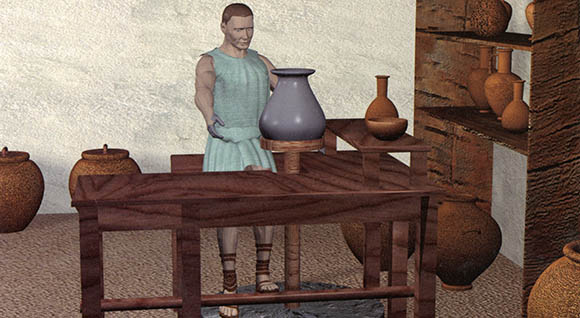12. Clay working

Ceramic items were common in all Pompeii households: clay was used to produce cookware, dinnerware, and carrying containers such as wine and oil amphorae. Oil lamps were also made of clay, and were filled with oil and animal fat to feed the flame which burned on a wick. Pots were made by using a form of potter's wheel known as a kick-wheel. Once they had been shaped, the pots were fired in special kilns. One such kiln was unearthed in Pompeii, in Via di Nocera. The kiln was found still containing oil lamps fired shortly before the city was destroyed.
At Pompeii clay objects were an important component of any household. Clay was used for making vessels for use on the table and in the kitchen, and for containers used in the transport of foodstuffs such as wine, oil, and fish sauce, as well as in the preservation of eggs.
Vessels of local manufacture were formed on a potter’s wheel and then fired in kilns. In specialised workshops, like the one on the Via di Nocera, clay lamps were produced using two-sided moulds.


